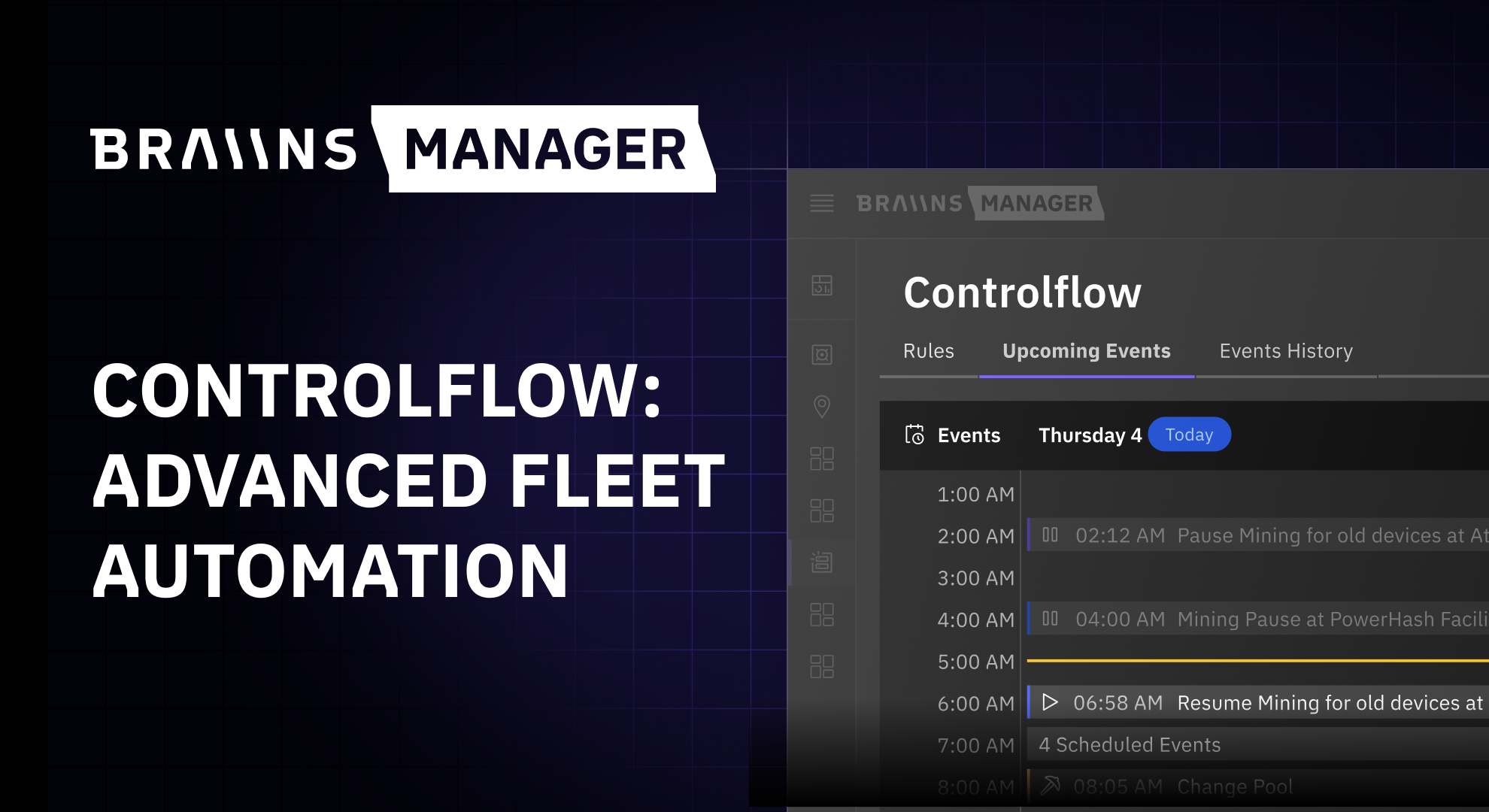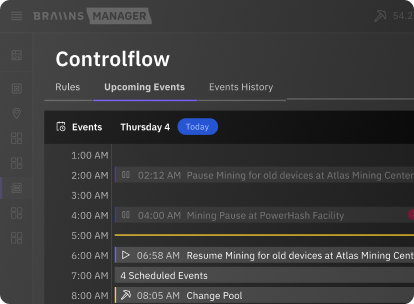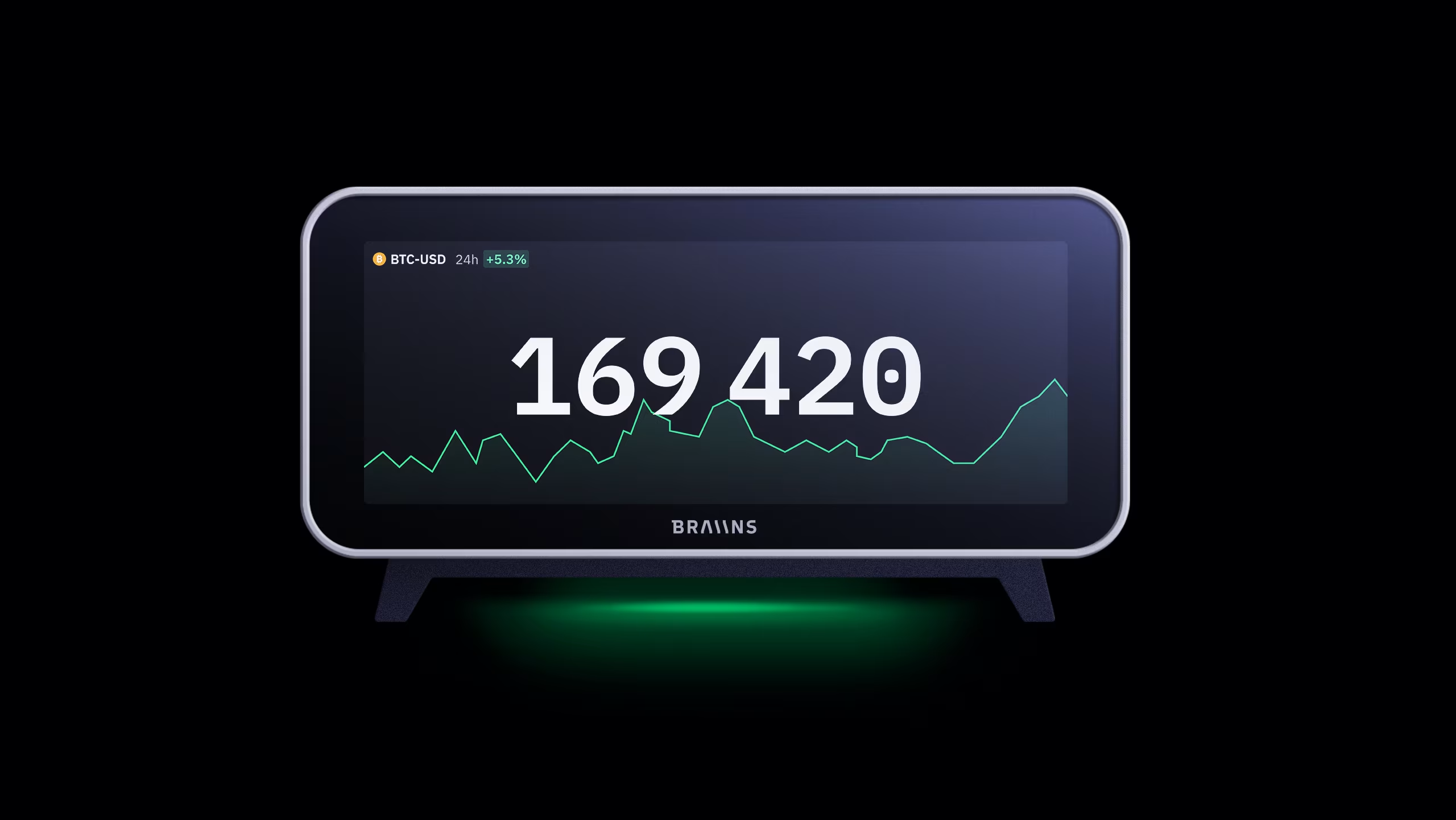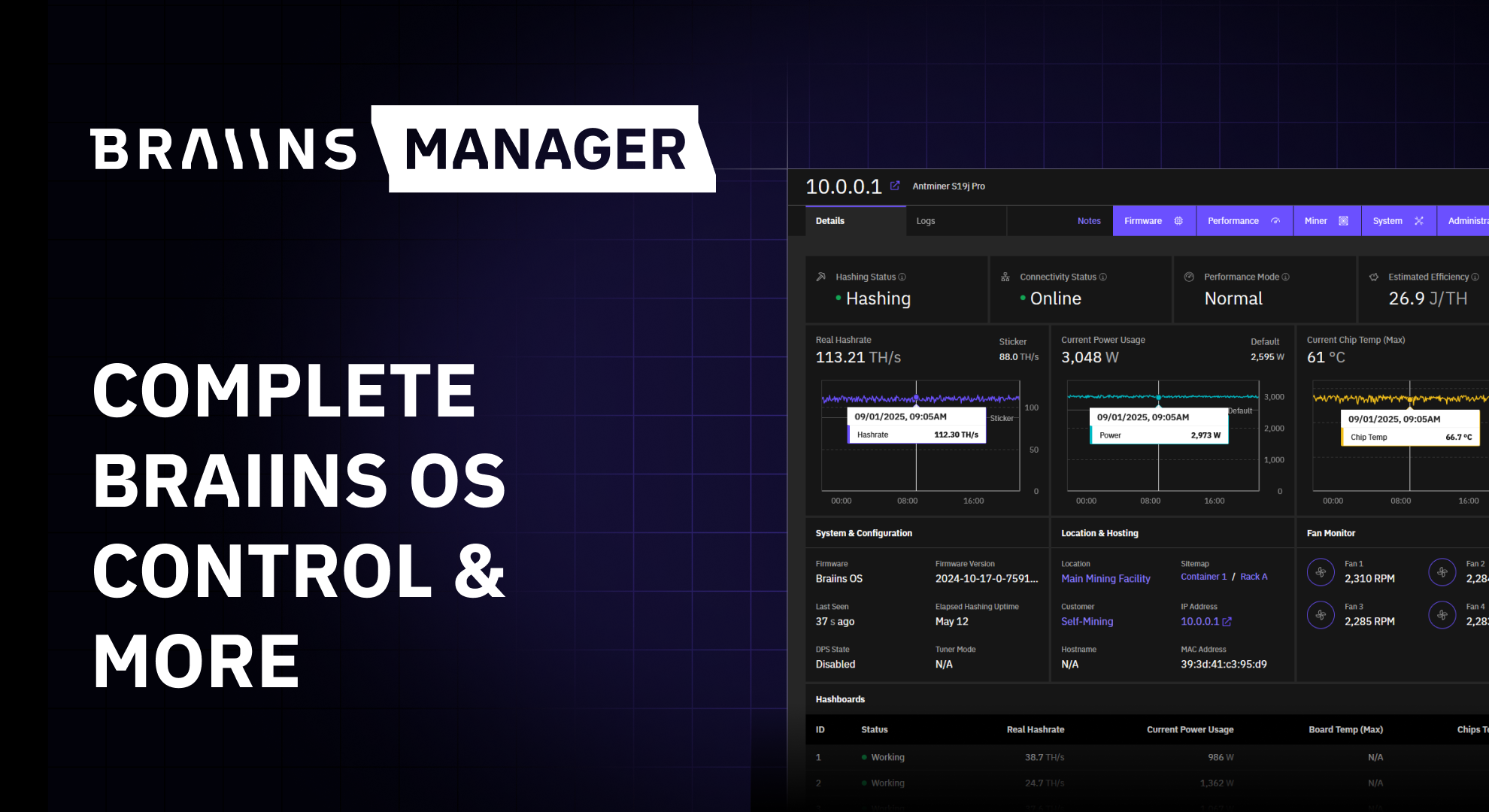Bitcoin Mining Profiles: The Investor, The Entrepreneur, and The Prospector
Published
30.11.2020
Categorizing the different Bitcoin mining strategies used to maximize profitability at any scale of operation.

Table of Contents
Bitcoin’s mining contest is an elaborate dance performed on the global stage of energy and capital markets, requiring significant expertise in the areas of industrial power, information technology, and capital investment. At its base level, however, bitcoin mining is just a service for hire, that offers security to the bitcoin network, for a price. This quick article is concerned with the dance, in finding the balance between these diverse, but not independent considerations. Under examination, we see that, among users who operate their own mining hardware, a few distinctive profiles emerge, based on the balance of these competing demands.
Optimize ASIC performance for maximum hashrate or efficiency
It is reasonably well known that there is a trade-off between a bitcoin miner’s (ASIC) efficiency, and its productivity. Typically, lower power modes permit higher efficiency (in TH/J; conversely a lower exhaust rate in J/TH), and higher power modes provide greater yields (measured in hashrate, TH/s) which means more BTC mined in a given time period. A crude plot depicting this idea follows:

Let us acknowledge that there are the two extremes of most interest:
1. Where the unit is most efficient (lowest J/TH, yellow line), and
2. Where the unit is most productive (highest TH/s, green line)
Miner efficiency exists on a continuum between these two poles, and the owner must select an operating point that balances their desire to maximize total hashes, and how economical their machines are in attaining them. A generalized model is shown below:

While we observe that these operating points may be fluid, subject to change based on bitcoin’s price and market conditions, it still remains that since mining is capital intensive and requires planning, a miner cannot deviate too far from their overall strategy without harming their investment.
Categorizing Bitcoin mining strategies
Based on my own experience with bitcoin mining, and my observation of others, this “efficiency continuum” informs the decisions of miners, who can be grossly generalized by the following three archetypes:
1. The Investor
2. The Entrepreneur
3. The Prospector
To show how these caricatures fall on the power-efficiency spectrum, see below:

I’ll spend the next few lines explaining each of these profiles. By identifying how you fit within the ecosystem of miners, you may find a greater chance of sustained profitability. The obvious caveat is that if you already have a professional mining operation, you have already developed your own mining style, and probably don’t need to read this article. Regardless, the exercise may be instructive to those miners with less experience.
1. The Investor: professional groups led by visionary technologists and investors with deep pockets. They are on the bloody edge of technology, leaders of the mining arms race--locking up 100T+, S19-class machines. Their strategy depends on large-scale deployment and capital investment, which requires them to have their foot on the gas at all times. Due to the aggressive financial position, shipping delays, and machine downtime are a disaster. Plant availability (uptime) and warranty are critical for protecting the investment. Efficiency is less of an issue since they are the most capable of securing attractive bulk electricity pricing through creative agreements, or energy technology. The Investor is the one driving the difficulty adjustment upwards, in an effort to dominate total hashpower, and to outpace and drive out their competitors. In all, the Investor is concerned with the highest productivity, which is accomplished through a combination of owning the “best” assets, and operational excellence.
2. The Entrepreneur: This is the scrappy startup, quintessential doers who can just make things work, through ingenuity and elbow grease. Since such an operation is usually the brainchild of one, or just a few wily individuals, they have more leeway to be creative, or explore unique or unconventional methods of production. They are probably most likely to find clever solutions that prove profitable. They probably quickly moved on from running factory firmware. They have to be more efficiency-minded than the Investor, because it’s unlikely they will get more competitive energy pricing. With a strong internal engineering and operations capability, the Entrepreneur may be able to greatly reduce their capital expenditure, and for that reason be able to operate machines profitably, albeit under less ideal conditions.
3. The Prospector: This class of miner is most akin to individuals panning for [digital] gold. Just a blip on the hashpower radar, but they’re out there, staking their claim (using proof of work; proof of stake is lame). These individuals are probably the most varied in composition. They are unilaterally nerds, and may also be makers, engineers, crypto-libertarians, or just hustlers trying to make a buck. Their motives are equally diverse: pure profit, procuring clean sats, learning about bitcoin, or breathing life into junker ASICs that they bought online. They are not encumbered by commercial agreements, and are most free to use the hardware as they wish. Many will not be able to earn coins profitably. They are the most sensitive to miner efficiency, since retail electricity rates will make it very hard, or impossible to earn a profit. For this reason, they will probably learn to run their miners at lower power, and seek more efficient operating points. For them aftermarket firmware is essential, in order to narrowly tune and optimize their miners. And since their profit margins are razor thin, one must be extremely cautious not to overpay for their equipment, or the payback period will never be realized.
I’ll be the first to admit that this is not a definitive list, but should still help inform the reader as they consider their own unique mining style. By comparing yourself to the profiles listed above, acknowledging the specific or unique advantages that you may have, and identifying where on the power-efficiency spectrum you fall, you will have a better understanding of the mining strategy that is most likely to serve you well. Thanks for reading, and *merry* hashing.
Categories
Be the first to know!
Read Privacy Policy.
Most Recent Articles

Introducing Controlflow: Advanced Automation in Braiins Manager
9.12.2025




